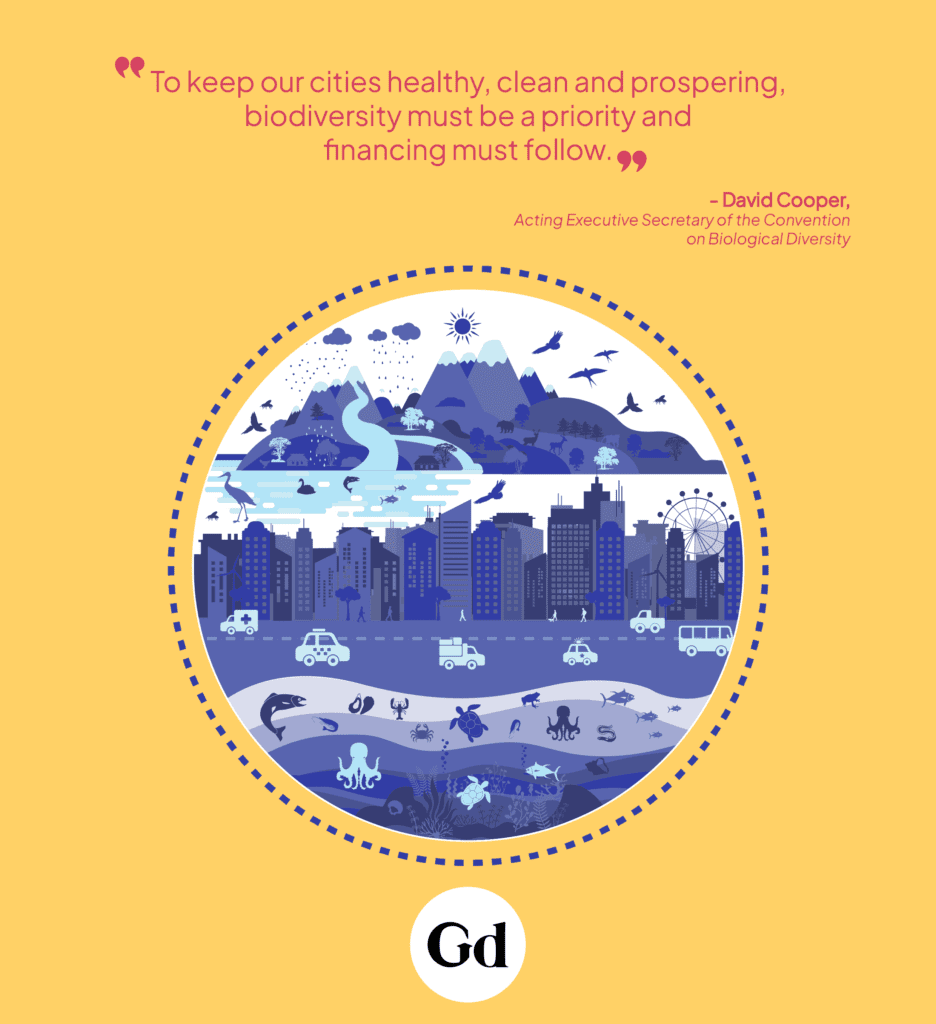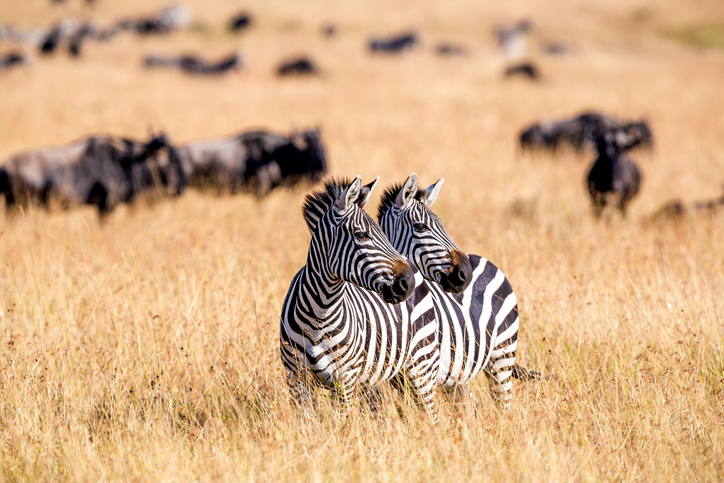Efforts to reverse biodiversity loss are critical in cities to which people increasingly flock in pursuit of better lives. “Nature-based solutions” offer the means to preserve nature in urban environments, whilst also combating pollution, climate change, poverty and inequality. But as speakers at the 2023 Global Development Conference explained, these solutions need to be brought firmly into the mainstream of public policy, business practices and civil society discussions.
“In a world where cities are growing and expanding at an unprecedented rate, it becomes increasingly clear that we must make strategic investments in green urbanization to ensure a sustainable future… To keep our cities healthy, clean and prospering, biodiversity must be a priority and financing must follow.”
These are the words of David Cooper, acting executive secretary of the Convention on Biological Diversity, on World Cities Day in October 2023. His call to action coincided with his appearance at the 2023 Global Development Network (GDN) conference in Quito, Ecuador, where researchers, policymakers and practitioners from diverse backgrounds came together to discuss the threat that the loss of the variety and abundance of species and ecosystems poses to sustainable development. A central focus of the event was the potential of the Kunming-Montreal Global Biodiversity Framework, which seeks to drive actions that will protect 30% of the Earth’s lands, oceans, coastal areas and inland waters by 2030, and achieve “a world living in harmony with nature by 2050”.
In the context of the urban environments, in which two-thirds of the global population are likely to live by mid-century, the key to delivering on the latter objective lies in “nature-based solutions”. These elements of green infrastructure might include trees, plants, wetlands, parks and open spaces that generate oxygen, take in carbon, mitigate air pollution, absorb rainfall and provide wildlife habitat. In general, they promote both a healthy environment and the well-being of inhabitants.
This blog presents key policy lessons from the GDN conference on how to bring nature-based solutions into the mainstream and our cities for a more sustainable future.
Urban futures
The importance of preserving species and ecosystems is not just an issue about oceans and tropical rainforests. At the opening plenary of the conference, Thomas Elmqvist of Stockholm University noted an emerging consensus: in our “urban century”, the health of the Earth depends on the coexistence of rapidly growing cities and the natural world.
One strategy for guiding cities towards the goal of conserving nature for biodiversity and human well-being is to facilitate a planning process based on positive visions for urban systems among stakeholders. Elmquist outlined the Urban Nature Futures Framework, a way of developing alternative visions and scenarios for the management of nature in cities based on three sets of values.
First, there is “urban nature for nature”. This is based on the intrinsic values of biodiversity and supports, for example, the rewilding of urban parks with native species. Second, there is “urban nature for society”, which is based on utilitarian values of what is best for human well-being and which encourages nature-based solutions, such as green infrastructure, green roofs and artificial wetlands to improve climate, air and water quality, and physical and mental well-being. And third, there is “urban nature as culture”. Based on relational values[MK1] – the values of interactions between people and nature, and those among individuals in society – this is manifested in parks, botanical gardens and urban agriculture, and is celebrated in festivals and art.

Mainstreaming biodiversity for sustainable development
Several GDN conference sessions focused on the need to broaden discussions on the values and benefits of nature to as wide an audience as possible and at all levels of society, from local to global. Gabriel Quijandría of the International Union for Conservation of Nature explained that such “mainstreaming” means integrating biodiversity considerations into decision-making processes and policies in key areas like poverty reduction, climate change mitigation, and trade and international cooperation. It also applies to sector-specific plans in agriculture, fisheries, forestry, mining, energy, tourism and transport.
But as many participants recognized, mainstreaming is a complex and challenging task. It might range from talking to local communities about the importance of river dolphins in the food chains and freshwater ecosystems of Ecuador – as described by Jessica Pacheco of WWF-Ecuador – to persuading international investors of the benefits of investing in bonds, trust funds and other financial instruments promoting conservation – as referred to by Camilo Santa of the Inter-American Development Bank.
The OECD has produced a “blueprint for action” on biodiversity mainstreaming, the central message of which is for governments to “establish a strong social and business case”. That proposes a national assessment of ecosystem services and their full social benefits, including monetary values, where feasible, and a database of evidence on the drivers, pressures and state of biodiversity. The report also recommends developing targeted messages for stakeholders and working together to identify solutions, an idea that was echoed repeatedly during the conference.
Research, policy and education
Bridging the gap between research and policy is a core GDN objective – and there was much discussion at the conference about how this can be achieved most effectively in the areas of the biodiversity crisis and sustainable development. As ever, there is a need for more research. The natural sciences need to keep improving our understanding of ecosystems and the social sciences need to show us how human behavior, social structures and institutions influence conservation efforts – and how to build capacity for research and policy impact in low- and middle-income countries.
All agreed that a huge educational effort is needed, not just with students and the general public, but with policymakers. Gabriel Quijandría highlighted a key challenge of mainstreaming the environment and biodiversity in public policies: “When you discuss the proposals with a cabinet of decision-makers in the public sector, no one goes against the idea of protecting biodiversity. The problem lies in implementing the proposals. The idea of approaching the issue is limited by the budgets, the bureaucracy and the idea of changing things.”
But there is hope of change. The words of Carolina Rosero Cordero of Conservation International Ecuador in the opening plenary offer a suitable call to action: “We need to be ambitious and dedicated, and collaborate across all sectors to address biodiversity and development issues. And we all need to work together – non-governmental organizations, business enterprises, academia, civil society organizations and governments, while integrating indigenous people and communities into policymaking and implementation.”
The photograph accompanying the article and titled ‘Geoffroy´s Cats Fate’ was captured by Santiago Sainz-Trápaga. It earned second place general and first place in the biodiversity loss section of the photo contest held by GDN in collaboration with WWF Ecuador during GDN’s 2023 conference on biodiversity and development.






